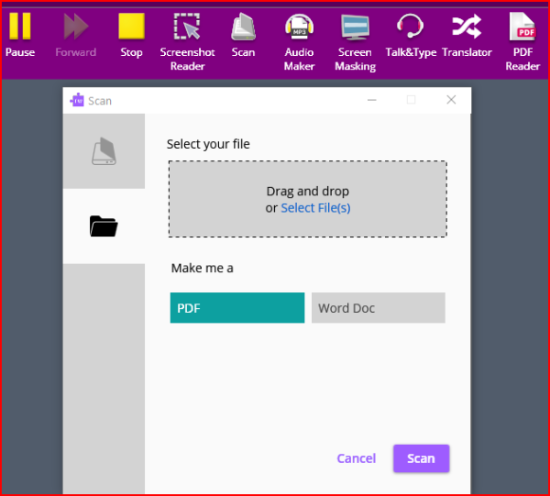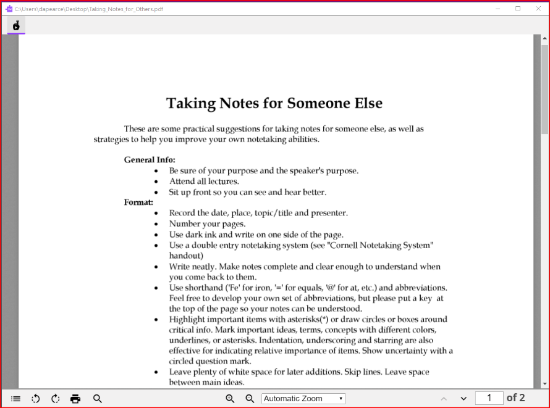Accessible PDF and Word Documents
There may be times when you have a student in class that receives the accommodation of E-text or alternative text. At its core, this accommodation addresses the barrier of inaccessible text. The student utilizes assistive technology to listen to the text or they may use a braille note taker to convert the text to braille. Accessible PDF and Word documents are searchable which benefits everyone and those who use a keyboard rather than the mouse will also benefit from the added document structure.
Use Read&Write to Create Searchable PDF Documents
To create searchable PDF documents, we recommend utilizing Read&Write. K-State has a site license for Read&Write, a feature rich software program that is available to all students, faculty and staff with an eID and password. Visit the IT Read&Write webpage to download the product. If you have any difficulties with the download process, contact the IT Help Desk at helpdesk@k-state.edu.
You will use the Read&Write scan feature which allows you the opportunity to scan the document with OCR (optical character recognition). This allows assistive technology to interact with the document content. The scan feature is either used with a scanner or more often a digital file.

If you already have a digital copy of the article, select the file folder and you can choose to drag and drop a file or select a file. You have the choice of saving to a PDF or a Word document. In most cases, you will save the file back to a PDF. Then Read&Write scans the article through OCR. This may take a few minutes depending on the number of pages. You will then be asked to save the file with a new file name.

Once scanning is complete, the article will be presented in PDF Reader, a feature of Read&Write. The article should now be searchable and readable by Read&Write. To start reading, click on a word.
The quality of the scan depends on the quality of the original PDF. If the original PDF is hard to read due to extraneous dark lines, shading, or blurry text, you should consider replacing the article or redoing the scan. You may also want to look at the Read&Write YouTube videos - Read&Write for Windows scan feature or Read&Write for Mac scan feature.
Create Accessible Word Documents
Microsoft Word has many built-in features to help author documents that are accessible. There is also a built-in Accessibility Checker that alerts you to potential accessibility problems. Here are three key practices:
- Include alternative text for all visual elements. To find missing alternative text, use the Accessibility Checker. The purpose of alternative text is to convey the importance of the visual to those who can't see the screen.
- Use built-in headings and styles. Use a logical heading order and the built-in formatting tools located on the ribbon at the top of the page.
- Use a simple table structure and specify column header information.
Once your document is complete, run the Accessibility Checker for a final check.